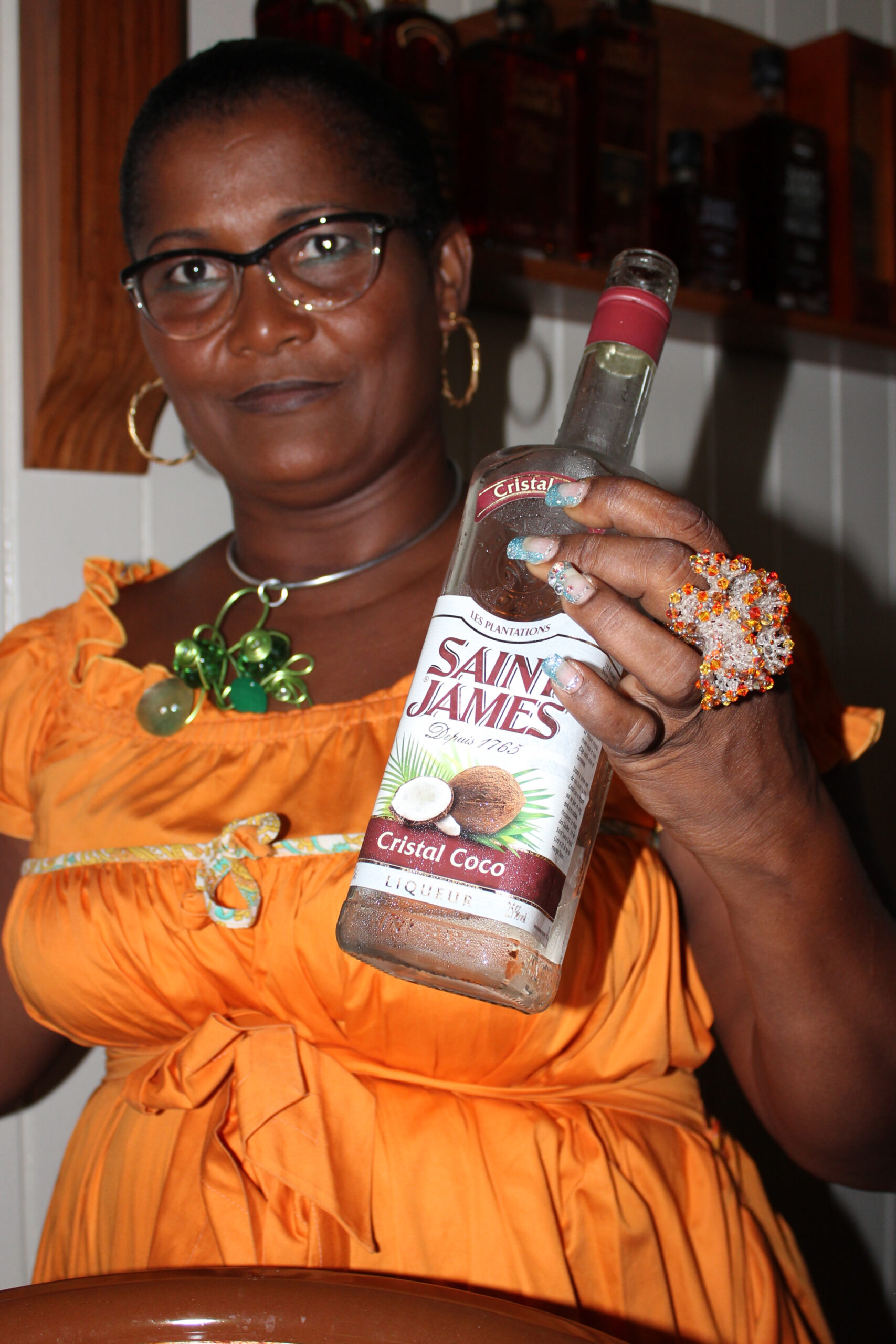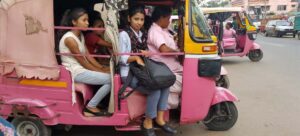
Two Girl Roamers in love learn to embrace cruising, too
Do you hate cruising? For years, I thought I did, too. I went on a transatlantic cruise as a teenager, and by about the fourth overcast, 50°F day, I was scanning the horizon for icebergs, because an emergency evacuation would at least have been something to do.
Years later, I went on a booze cruise out of Los Angeles. That jaunt didn’t include much time on land, either. When we did disembark, it was in Ensenada, Mexico, which is essentially a dusty, tequila-soaked suburb of San Diego whose name, I’m pretty sure, means “three-day hangover” in Spanish.
Something made me stick with it, though—the twenty million people worldwide who cruise every year must be onto something, right? And eventually, I got better at picking cruises that suited me. An Alaskan cruise had lots of stops, and spectacular scenery even when we weren’t in port. An Eastern Caribbean cruise offered a different island to explore every day. I started to figure out that cruising could be rewarding even to someone who considers herself an adventurous traveler.
What I finally learned is that if you love being on a ship, then it’s important to research cruise lines to find out which ships offer the spas, shops, nightclubs and restaurants you want to spend time in.
But if you’re an explorer, like me, then make sure you concentrate on itineraries, and pick a cruise that hits ports that you’d like to visit and includes few of the dreaded Days at Sea.

Armed with these insights, my wife and I made what turned out to be an excellent decision on our latest cruise – an eight-night Southern Caribbean trip on the Carnival Splendor recently.
We hadn’t exactly been looking to book a cruise, but we were ready for a vacation—in fact, we realized that we’d been married about a year and never taken a proper honeymoon, so we were overdue. The decision about where to go became easy when a friend we’d met on a previous Caribbean cruise let it be known that he was rounding up a group for the Carnival sailing.
A glance at the itinerary showed it to be just about perfect for us. It included five islands we’d ever been to, making my inner explorer happy. Carnival might not have been my first choice of cruise line—the clientele skews a little young for me—but as I’ve said, I’m more about the journey than the vessel, and the fact that we’d be with friends made any demographic issues essentially moot.
Best of all, our friend, Paul Senft, isn’t just any Caribbean tourist. He is the founder and publisher of RumJourney.com (a site that celebrates two of my favorite things: rum and travel), and he takes to the islands like a parrot takes to pirates. The common denominator among everyone he recruited is that we are all fans of the killdevil, and were eager to sample as much as possible. This wouldn’t be just any Caribbean honeymoon. This would be a rummymoon.
San Juan, Puerto Rico
We arrived a day early in San Juan, where the cruise departed, just to be safe. Having visited the Bacardi distillery (Road 165, Km 2.6, Cantaño, Puerto Rico; 787-788-1500; CasaBacardi.org) on the edge of San Juan’s lovely harbor, on another visit to Puerto Rico we skipped the obvious rum attraction in town on this trip. I can say that it is definitely worth a visit. You’ll learn all about how this popular rum is produced. And yes, there are samples. Lots of samples. Think about taking a taxi if you visit—it’s an affordable trip from Old Town San Juan.
Facing the prospect of a week where just about everything would be taken care of for us, Pipi and I decided to have a little adventure: We rented a car and braved Puerto Rico’s famous lane-and-a-half-wide roads for a drive to Ponce, on the island’s southern coast. Ponce is the home of Puerto Rico’s other signature brand of rum, Don Q (Destileria Serralles, Inc.; Num. 1 Calle La Esperanza Mercedita; 787-840-1000; ; DonQ.com). We arrived in town knowing full well that the actual distillery is off-limits except for incredibly rare private tours. (Paul describes it as the Willy Wonka Chocolate Factory of the booze world.) We were hoping, however, to make a pilgrimage to Castillo Serrallés (El Vigía 17, Ponce, Puerto Rico; 787-259-1774), the one-time home of the family that founded Don Q.
It’s normally open as a museum, but on the afternoon we visited it was closed, having been temporarily converted to a Halloween attraction. The moral? Always call ahead, even if your Spanish, like mine, is terrible. And don’t always turn your nose up at the obvious, easily accessible tourist attractions. They’re usually popular for a reason.

St. Croix
Puerto Rico is, of course, technically part of the United States, but with Spanish so widely spoken and Colonial architecture everywhere, it doesn’t always feel like it. St. Croix, part of the U.S. Virgin Islands, is also American, but with roads that are just a little bit narrower, and houses that tend just a tad more toward the corrugated, it feels even less so. In addition, cars inexplicably drive on the left.
This is reason enough to book a cruise excursion where your transportation is included, and that’s exactly what our group did. One of many excursions offered by Carnival on the island of St. Croix was a guided tour of the Captain Morgan Visitor Center (Route 663, 1 Estate Annaberg & Shannon Grove, Christiansted; 340-713-5654; StCroixTourism.com/CaptainMorgan), and our group jumped at the chance.
Like Bacardi, the Captain Morgan plant also paints a picture of mass-market rum. A trolley transported us across the sprawling grounds, past enormous warehouses and steel tanks several stories tall, while a guide explained fermentation and distillation to us.
Then we were herded into a theater where we watched about 20 minutes’ worth of Captain Morgan commercials, some of which were quite funny. And then it was time to taste. Each visitor received two drink tokens, and could choose from a list of 10 or so cocktails made with Captain Morgan. I sampled a fairly pleasing punch and a delicious drink called 100 Pieces of 8, full of ginger and spice. Also available were essentially unlimited tastes of four different Captain Morgan blends. This was the most eye-opening part of the tour for me. I have always thought of Captain Morgan as a guilty pleasure, something I should have given up after college. But I was pleasantly surprised by the Captain Morgan Private Stock, a nicely aged, vanilla-tinged blend that could easily be sipped on its own.
Unfortunately, the tour ran a little long, as did our sampling session, so there was no time for our group to make a hoped-for side trip to St. Croix’s other claim to rum fame: The Cruzan Rum distillery (3A Estate Diamond, Frederiksted; 340-692-2280; CruzanRum.com/VisitUs). We did have an hour or so to spare in the tidy port town of Frederiksted, so we wandered into Rosie’s restaurant where we enjoyed a lunch of grilled chicken, conch fritters, and rum punch made with Cruzan rum felt like an authentically Caribbean experience, and made a good consolation prize for having missed the distillery.
The take-away here? If you want to do it all, consider striking out on your own, either by renting a car or by hiring a taxi driver to escort you around the island. (Keep in mind that if something goes wrong and you’re not back at the ship in time, it really will leave without you.)
Or, just relax let go of your ambitious itinerary. You’re on island time now—and you’re drinking rum, so how disappointed can you be? Save some experiences for your next visit.

Martinique
There’s no question but that you’re in a foreign country when your ship pulls into the picturesque harbor in Fort-de-France, Martinique. French is the primary language, and strolling through town, I noticed that the blocks of colorful pastel houses were not broken up by Walgreens stores or Subway franchises. Fort-de-France is all Caribbean charming, all the time.
On Martinique, we booked an excursion that gave us a good taste of Martinican culture. A bus took us to the ruins of St-Pierre, once a thriving city of 30,000, now the Pompeii of the Caribbean. It’s been this way since Mont Pelée erupted in 1902, killing every resident but one—a prisoner saved by his own thick-walled cell. The site isn’t as macabre as Pompeii, but a small museum, Musée vulcanologique de Franck Perret (Rue Victor Hugo, Saint-Pierre; 059-678-1516; Accueil-Martinique.fr/EN/Visite-Musee-Franck-Perret_9366.html), preserves some eerie artifacts of the blast, like a half-dozen watches all stopped at the moment of the eruption, and clumps of nails fused together like candy left inside a hot car.
It wasn’t all doom and gloom—we also enjoyed my favorite meal of the whole cruise at a Creole restaurant in the hills called Le Bambou (Fond Marie-Reine
97260 Morne Rouge; 059-652-3994; Facebook.com/RestaurantLeBambou) – where we dined on curry chicken, cod fritters, taro, and breadfruit that gave us a literal taste of island life. (The rum punch helped, too.)
For our group, however, the highlight was a tour of the St. James distillery (Bourg – 97230 Sainte Marie; 059-669-5037; US.Martinique.org/Rum/Saint-James-Distillery). St. James is almost the polar opposite of a place like Bacardi or Captain Morgan. Where the big boys are all gleaming efficiency, St. James is plantation quaint. Charming low-slung stone buildings dot the grounds, which are decorated in pieces of retired sugar-cane pressing equipment, all covered in a tropical patina of moss.
One other major difference between St. James and every other distillery I’d ever been to is that St. James doesn’t produce rum, it produces rhum. Most rum is made from fermented molasses, which is a byproduct of sugar refining. On French or formally French islands, however, this type of beverage is dismissively referred to as “industrial” rum. (Our St. James tour guide told us with a Gallic sniff that this style of rum is “adequate for cooking.”) On French islands, rum is made directly from fresh sugarcane juice, and is known as “rhum agricole,” or “agricultural rum.”
This sounds promising, and the style certainly has its adherents—Paul, for example, can’t get enough of it—but it isn’t to my taste. The flavor that connoisseurs usually describe as “grassy” to me is reminiscent of a barnyard, and while I liked the ti punch that St. James offers in its tasting room, made with rhum, lime juice, and simple syrup, I still can’t get past the impression that I’m drinking moonshine whipped up in a henhouse.

Grenada
Not to worry. Another day brings another island. The next stop was tiny Grenada (pronounced like “hand grenade”), a tiny sovereign nation formerly colonized by Great Britain and best known to Americans as the site of a brief invasion in 1983.
Among the group we were traveling with, Grenada is best known as the home of the Clarke’s Court distillery (Woodlands, St. George; 473-444-5363; ClarkesCourtRum.com) Clarke’s Court held two charms for me: Its rum is made from molasses in that “industrial” style I prefer, and its product is not easily available in the United States.
The ship excursion that most of us booked ourselves included a tour of the Clarke’s Court facility, and it turned out to be everything I love in a small distillery. As seems to be almost a rule, the grounds were strewn with disused sugar-cane processing equipment. (The rum industry developed hand-in-hand with the sugar industry in the Caribbean, but these days few distilleries grow and process their own cane. Clarke’s Court, for example, purchases its raw materials from Guyana.)
Inside the clanking, steaming, facility, the smell of molasses was everywhere, and its easy to remember that rum-making is an old Caribbean tradition, going back at least as far as 1651. In fact, its easy to imagine that some of the rusty Clarke’s Court equipment dates back to Oliver Cromwell—although that’s not, of course, true; things just age quickly in the steamy tropical heat.
A highlight of the tour is viewing the huge open fermentation tanks. This is where the first part of the rum magic happens, as the sugar content of the molasses bubbles and churns itself into a mustard-colored sludge with an alcohol content like that of wine. (Later this liquid, called the “wash,” or “mash,” will be distilled into clear rum with an alcohol content of up to 138 proof, although 80 proof is standard.)
It can be a little shocking to see the tank so unprotected, but there’s a reason for it: purists believe that the yeasts present in the air add at least as much character to the finished product as the terroir of a particular vineyard adds to its wine.
Later in the tasting room, I tried not to think about how many iPhones and pairs of sunglasses had formed the character of the rum I was drinking—I just enjoyed it. Clarke’s Court makes a range of rums, from an un-aged white rum good for cocktails to a few barrel-aged dark rums. (The color comes from time spent mellowing in charred bourbon barrels.) There’s also an interesting overproof rum, so high in alcohol (69%) that a sip practically evaporated in my mouth before I could swallow it. And if you ask really nicely, the staff might pull a bottle of the #37 blend out from behind the counter and give you a taste. This is their premium aged rum with hints of vanilla, banana, and nutmeg—appropriate, as Grenada is known as the Spice Island.

Did we need more relaxation after this? No, but our excursion also included a couple of hours—and free punch made with Clarke’s Court rum—on beautiful BBC beach. This crescent of off-white sand is partly shaded by palms and fronts clear, warm, blue water straight out of a tourism poster.
Later, Pipi and I walked off our stupor in the port town of St. George’s. A stroll around the cinnamon-and allspice-scented Carinage, as the waterfront promenade is called, cleared our heads and readied us for a return to our comparatively bland shipboard life.
Dominica
Though we’d had good luck with the official Carnival excursions so far, on the island of Dominica (pronounced Dough-meen-EEK-uh; no relation to the Dominican Republic), our rum group here went independent. Paul booked us a bus driver, Chris Banton, who was a tour guide by day, and a calypso singer by night. At first I thought the residents of Dominica must be even friendlier than people on the other islands, because it seemed everyone had a “one love,” or “still blessed?” greeting for him as we rolled through the streets of Roseau. Later, it became clear that Chris is kind of a big deal in this corner of the Caribbean. He sang several of his songs for us a cappella, and the chorus of one of his numbers, which went: “Bless Yourself, Don’t Stress Yourself” quickly became a mantra for the rest of the trip.
Chris first took us to the top of Morne Bruce, a hilltop overlooking Roseau and the Caribbean Sea beyond. Then we made a quick trip to the Dominica Botanic Gardens (Bath Road, Roseau; 809-448-2731; Da-Academy.org/DaGardens.html). We were ostensibly there to see a captive Sisserou parrot, which is the national bird of Dominica. But, as so often happens with aviaries, the best show was put on by local birds flying freely above. We didn’t see much of the parrot, but we did see hummingbirds, a sleek black smooth-billed ani, and dozens of flitty little yellow bananaquits.
Then it was on to the main attraction, the Shillingford Estates distillery (Macoucherie Village; 767-449-6224), a small operation, whose rums are not exported to the United States, was the funkiest and most bare-bones of all the distilleries we visited. Buildings made of crumbling cinderblock and weathered shingle looked like the next tropical storm might blow them down. Inside the windowless still room, a warren of wooden-plank walkways made me feel like I was below decks on a whaling ship—albeit one that smelled like molasses.
The tasting room, too, was remarkable in its unpretentiousness. Wooden benches were the only décor, and some of the bottles were hand-labeled. Interestingly, this distillery is a rare one that makes rum from its own sugarcane. Even more unusually, the distillery makes rum from both sugarcane juice and molasses, which might be a legacy of Dominica’s having been colonized by both England and France at various points in its history. Or maybe it’s just the quirkiest distillery ever—and well worth a visit.

After tasting, Chris (who, I’m happy to report, did not taste any rum) whisked us off to a late lunch at the Romance Café (767-449-7922; Facebook.com/RomanceDominica) on Mero beach. This wasn’t the best beach we visited—the sand was a little coarse, and the waves a little rough—but lunch was fantastic. The Romance Café is run by an ex-patriot French woman who, like me, believes that anything good is better grilled in butter. In her hands, something as simple as a fish sandwich, made with fresh local cod and served on a slab of French bread, became sublime.
As seems to happen a lot in the Caribbean, especially where rum is involved, we never did get to our last planned stop, the Morne Trois Pitons National Park (St. George Parish; 767-225-1971; AvirtualDominica.com/WorldHeritageSite.cfm). This exceptionally wild piece of land could occupy a visitor for days, so it’s just as well that we didn’t attempt to cram it in. We almost certainly would have ended up being left behind by the ship. Although when I think of that fish sandwich, I realize that there are worse things than being stranded on Dominica.

Grand Turk
Grand Turk is the only island we visited on the cruise that doesn’t have its own distillery. But rum from other islands is blended and bottled here by the Bambarra company. After a morning spent snorkeling at the shallow Oasis Reef, and then at the more spectacular Library Wall, where we saw a shark (a tiny, harmless nurse shark, but still…), we set off on a quest for it.
Trying to find some Bambarra rum brought Pipi and me face to face with one of the more unsavory aspects of cruising: All those tourists docking at all those Caribbean islands do infuse cash into the economy, but the wealth is not spread evenly. This is particularly clear on Grand Turk, where there is no town surrounding the cruise port. All there is in the immediate vicinity is a massive duty-free shop, and the world’s largest Jimmy Buffet’s Margaritaville restaurant. Most cruise passengers visit at least one of these places, but hardly any take their dollars much further inland.
Pipi and I tried, and honestly, it’s easy to see why others don’t. The nearest actual settlement of any size is Cockburn town, about three miles distant. We’re pretty good at finding our own fun, and enjoyed an hour or so in town. We browsed trinket kiosks, observed a herd of wild donkeys hoovering up boxes of Corn Flakes left out by sympathetic locals, and sighted flamingoes doing their pink thing out on the salt flats that flank the downtown area.
We got our rum, too, served with Coke at a little snack stand near the Turks and Caicos National Museum (Front Street, Guinep House, Cockburn Town;
649-946-2160; TCMuseum.org), but after that, even we had to admit that we’d pretty much done Cockburn town. It was time to head back to the ship and prepare for the long day at sea that would bring us to the cruise’s disembarkation point in Miami.

Ft. Lauderdale
Eight days, six islands, and 22 varieties of rum (or rhum) after we left home, we chugged into the port of Miami with an evening to kill before our flight back to the Bay Area the next morning. Miami had always struck me as one of the most foreign of American cities, but compared to where we’d come from, its paved, donkey-free streets looked like Mayberry.
On the recommendation of Paul, the one-man Yelp of all things rum-related, we headed north to Ft. Lauderdale, home of the legendary Mai-Kai tiki bar (3599 North Federal Highway, Fort Lauderdale; 954-563-3272). We snagged the last two tickets available for the evening dance performance, and settled in for a night of pu-pu and umbrella drinks.
Mai-Kai, like most tiki bars, is more Polynesian than Caribbean, but it didn’t matter to us. We weren’t quite ready to go home yet, and wanted to savor a last few hours in another world, preferably with rum in front of us. So as hula skirts swirled and Tongan fire dancers pounded the stage before us, we raised shrunken skull-shaped glasses in celebration of our rummymoon, and toasted our love for each other.
But it wasn’t just ourselves we were toasting. We were celebrating a new love, too, one that took a long time to grow: our passion for cruising.
To book your next cruise, contact Heather Cassell at Girls That Roam Travel at Travel Advisors of Los Gatos at 408-354-6531at or .
To contract an original article, purchase reprints or become a media partner, contact .







